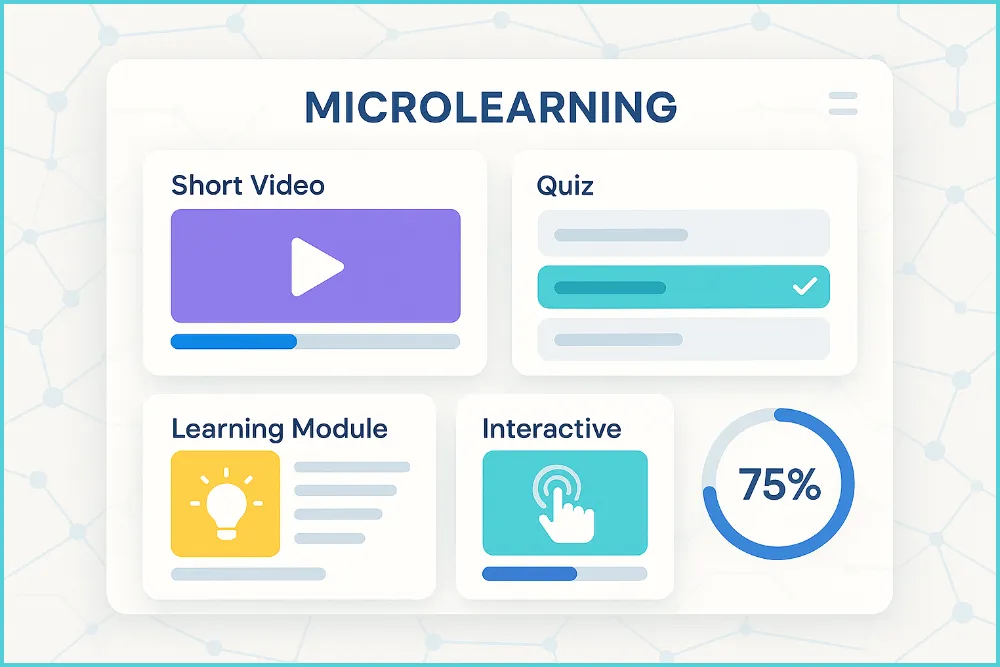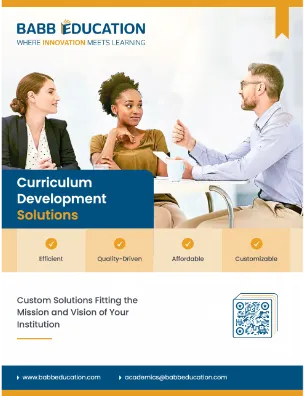As administrators, educators and instructional designers grapple with this complexity, we help them explore innovative solutions like microlearning. By delivering information in small, focused bursts, microlearning aligns with how today’s learners consume content—quickly, flexibly, and on-demand.
But what exactly is microlearning, and how can it create a big impact in higher education?
What is Microlearning?
Microlearning refers to short, targeted instructional units designed to meet specific learning outcomes. These bite-sized lessons range from two to ten minutes in length and are delivered in formats such as videos, infographics, quizzes, podcasts, short readings, and interactive activities. Unlike traditional long-form lectures or comprehensive modules, microlearning zeroes in on one objective at a time, making learning more digestible, engaging, and time-efficient.
Why Microlearning Works: Theoretical Foundations
Microlearning isn't just a trend—it's grounded in well-established educational research and theory offering a powerful approach to instruction by addressing how learners best absorb and retain information. For example, Cognitive Load Theory (Sweller, 1988) suggests learners have a limited capacity in their working memory. When instructional materials overload that capacity, learning becomes inefficient or even counterproductive. Microlearning mitigates this issue by narrowing the focus to a single concept at a time, reducing extraneous cognitive load and enabling more effective processing and retention. In parallel, Self-Determination Theory (Deci & Ryan, 2000) underscores the importance of autonomy and competence in fostering intrinsic motivation. Microlearning naturally supports these principles by giving students the flexibility to choose what, when, and how they engage with content. This autonomy enhances their sense of control and ownership, leading to deeper engagement and sustained motivation.
In online and hybrid learning environments, microlearning becomes especially impactful. These modalities often present challenges such as limited attention spans, variable motivation, and information overload. Here, the principles of Cognitive Load Theory become even more relevant, as learners face a continuous stream of digital content. Microlearning offers a solution by streamlining delivery into manageable, focused segments. Likewise, Self-Determination Theory aligns seamlessly with the learner-centered design of online and hybrid education. By empowering students to engage with content on their own terms, microlearning cultivates the autonomy and competence needed for success in digital learning environments. As a result, it emerges as a strategic, research-informed approach to enhancing learning outcomes in higher education.
How Microlearning Enhances Online Higher Education
One of the key advantages of microlearning is its ability to improve student engagement. In asynchronous courses, maintaining learners' attention is a persistent challenge. Microlearning addresses this by offering short, focused, and interactive content that captures attention more effectively. Tools such as animated explainer videos and scenario-based quizzes convert passive content consumption into active learning experiences, helping students stay engaged and motivated throughout the course. Microlearning can also promote better knowledge retention. Breaking down a one-hour lecture into a series of six 10-minute micro-lessons allows students to revisit content at their own pace, reinforcing understanding and supporting long-term memory retention.
Flexibility is another major benefit, particularly for the many adult learners in online higher education who are balancing school with work and family responsibilities. Microlearning provides just-in-time learning opportunities that fit into even the busiest schedules. Whether watching a short video during a lunch break or completing a mini quiz before bed, learners can engage with material in a way that complements their daily routines.
Finally, microlearning supports the growing trend of mobile learning. As more students access coursework via smartphones, the mobile-friendly nature of microlearning enhances both accessibility and convenience. Babb Education’s instructional design team is expert in creating engaging and interactive bite-sized lessons enabling students to learn on the go, transforming downtime into productive learning moments and ensuring that education is always within reach.
How Babb Education Creates Small Lessons with a Big Impact
At Babb Education, our instructional design team specializes in transforming complex content into impactful microlearning experiences for our clients. We understand that effective microlearning goes beyond simply dividing content into smaller segments—it requires strategic planning and a learner-centered design approach.
We begin by working with faculty and subject matter experts to define clear, focused learning objectives for each micro-lesson. Every unit of microlearning is designed to address a single concept or skill, ensuring clarity and precision. For example, instead of covering broad financial strategies in a business course, we might create a focused micro-lesson solely on “How to Calculate ROI.” This approach promotes targeted learning so students can get a deeper understanding of the topic.
To engage diverse learners, we use a variety of multimedia formats tailored to different learning preferences. For example, our instructional design team has worked with clients to incorporate short videos (typically 2–5 minutes) with voiceover and animation, interactive infographics for visual learners, flashcards and scenario-based questions for practice, and mini-podcasts for those who learn best through listening. These dynamic elements turn passive consumption into interactive, multisensory learning experiences.
Assessment and feedback are also woven into each microlearning unit. We embed immediate feedback mechanisms such as micro-quizzes or knowledge checks designed to reinforce content and identify learning gaps. For instance, after a micro-lesson on APA citation, learners might complete a drag-and-drop activity to practice proper referencing, helping them apply knowledge right away.
Finally, we leverage learning analytics to ensure ongoing improvement and instructional effectiveness. Microlearning naturally enables granular tracking, allowing instructors to pinpoint exactly where students are excelling or struggling. Our team supports clients in using platforms like Canvas and Moodle, which include robust analytics dashboards to monitor performance and provide targeted interventions. This data-driven approach ensures that microlearning isn’t just engaging, but also measurable and impactful.
Challenges and Considerations
While microlearning offers many advantages, it’s not a one-size-fits-all solution— the Babb Education team works closely with clients to determine whether it's the right fit for their specific needs and goals. Several important considerations must be addressed to ensure its effectiveness. Content complexity is a key factor; while microlearning excels at reinforcing or introducing concepts, some topics require deeper exploration calling for more comprehensive instructional strategies. Additionally, over-fragmentation can hinder learning—if content is broken into too many disjointed parts, students may struggle to grasp the broader context, making scaffolding and narrative flow essential. Finally, producing high-quality microlearning takes time, expertise, and collaboration; partnering with experienced instructional designers is critical to developing content that is both engaging and pedagogically sound.
Microlearning is more than a trendy buzzword—it’s a powerful instructional strategy grounded in educational research. For online higher education, it offers a way to personalize learning, boost engagement, and enhance retention—without overwhelming the learner.
Contact Babb Education today to learn more about how we can work with you to thoughtfully integrate microlearning into your institution’s course design and let’s create learning experiences for your students that are not only short and sweet, but also deeply impactful!
References
Ryan, R. M., & Deci, E. L. (2000). Self-determination theory and the facilitation of intrinsic motivation, social development, and well-being. American Psychologist, 55(1), 68-78. https://doi.org/10.1037/0003-066X.55.1.68
Sweller, J. (1988), Cognitive load during problem solving: Effects on learning. Cognitive Science, 12, 257-285. https://doi.org/10.1207/s15516709cog1202_4



